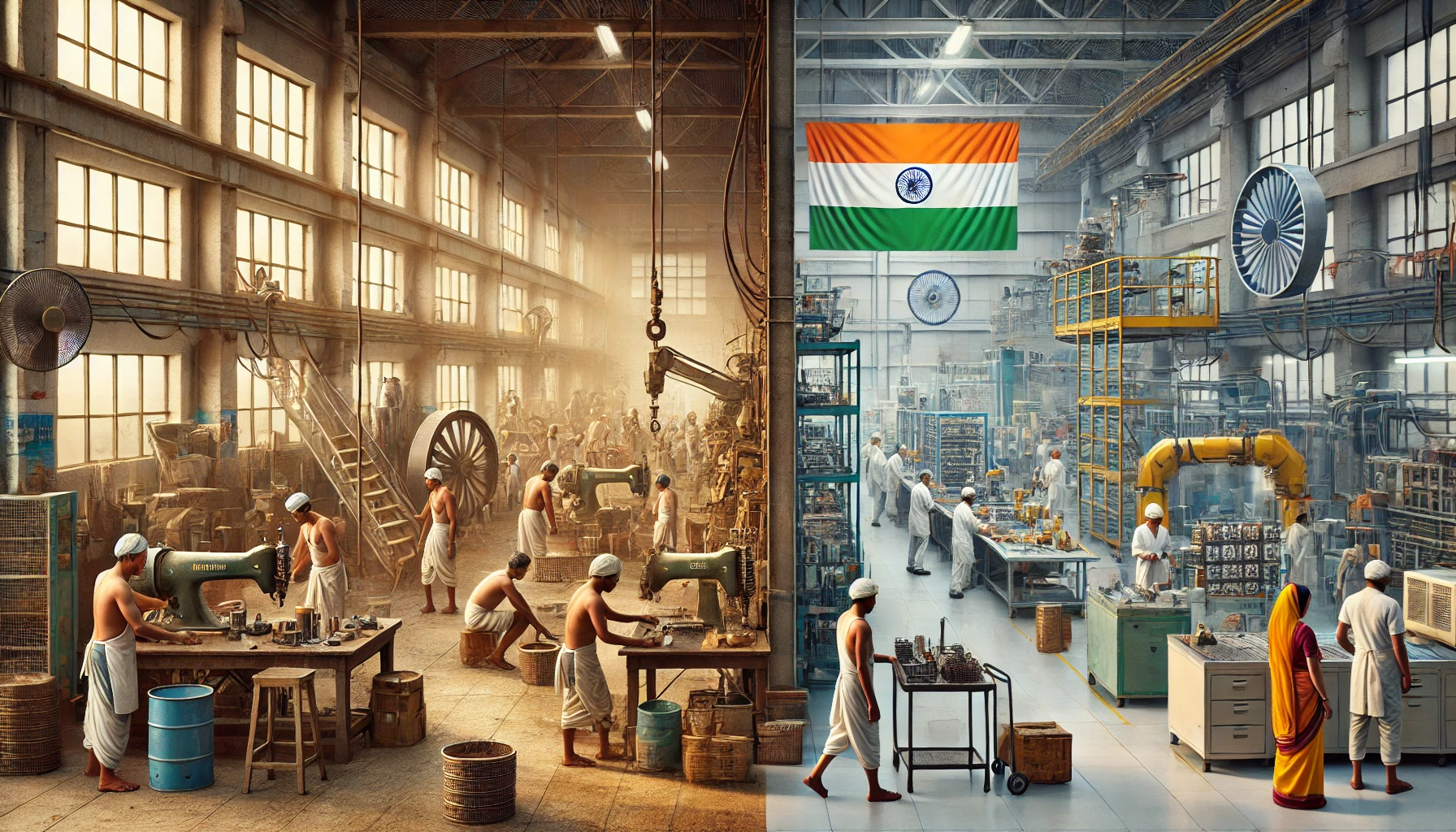Introduction
India's industrial growth continues to rely heavily on cheap labor rather than technological advancements. While developed nations have improved worker efficiency through innovation, Indian industries remain stuck in the trap of long working hours and minimal wages. This over-reliance on cheap labor hampers long-term progress and global competitiveness.
Exploitation of Industrial Workers
A recent study conducted in Ludhiana, Punjab, revealed harsh working conditions for migrant industrial workers. Employees in garment, auto-component, and other manufacturing sectors work for 11-12 hours daily, often without breaks during high-demand periods. Their remaining waking hours are spent commuting and managing household chores, leaving them exhausted and unproductive.
Despite these realities, corporate leaders in India continue to advocate for even longer working hours. The Periodic Labour Force Survey (2023-24) reported that only 21.7% of India’s workers hold regular salaried jobs. Even among them, a significant portion lack job security, written contracts, paid leave, or social security benefits.
Comparing Work Hours: India vs. Developed Nations
According to International Labour Organization (ILO) data (2024), India’s average weekly work hours stand at 46.7, significantly higher than the United States (38) and Japan (36.6). Developed economies have transitioned towards efficiency-driven growth, leveraging superior technology and management practices to optimize productivity while ensuring better working conditions.
The Structural Shift Toward Cheap Labor
Indian industry’s reliance on cheap labor has led to a shift from organized to unorganized sectors, where labor laws are weak or nonexistent. Over 70% of India’s manufacturing workforce (68 million in 2021-22) works in small, unregistered enterprises with fewer than 10 employees. These businesses, concentrated in industrial clusters like Coimbatore and Ludhiana, serve as suppliers to larger firms but struggle due to delayed payments, rising material costs, and lack of financial support.
Contractual Employment and Worker Disadvantages
Post-2011, 56% of new employees in India's factory sector have been contract workers. These laborers, hired through intermediaries, receive lower wages and remain outside the purview of labor laws. Migrant workers, in particular, face multiple disadvantages, including lack of social security, minimal wage hikes, and job instability.
Profit-Driven Labor Exploitation
Despite these exploitative conditions, profits for India’s factory sector have surged. In 2019-20, the share of profit in value-added was 31.6%, rising sharply to 46.4% in 2021-22. While this benefits industrialists in the short run, it limits economic growth by reducing domestic purchasing power and stifling innovation.
India’s Stagnation in the Global Garment Industry
India’s failure to modernize industries has resulted in stagnation in global markets. Despite being a labor-abundant country, India’s garment exports have remained at just 3.1% of the global share for the past two decades. In contrast, China, Bangladesh, and Vietnam have significantly outperformed India due to their commitment to technological advancements and efficient management practices.
The Consequences of Neglecting Innovation
Industries that continue to depend on cheap labor fail to explore technological opportunities, leading to sluggish growth in traditional and emerging sectors such as IT. Low wages and long hours also depress consumer purchasing power, weakening the domestic market and limiting economic expansion.
The Need for a Paradigm Shift
For sustained industrial growth, India must transition from labor-intensive to technology-driven manufacturing. Key steps include:
Investment in Automation & AI: Boosting efficiency and reducing reliance on manual labor.
Fair Labor Policies: Ensuring job security, higher wages, and social security benefits.
Support for Small Enterprises: Providing financial aid and protection against exploitative payment practices by larger firms.
Skill Development & Innovation: Encouraging research, innovation, and skill-based employment opportunities.
Conclusion
Stretching working hours while neglecting worker well-being and innovation is an unsustainable strategy. The Indian industry must embrace modern technology, fair labor practices, and strategic economic planning to compete globally. Failure to do so will ultimately hinder the country’s long-term growth, leaving industries stagnant and unable to scale. The sooner Indian business leaders acknowledge this, the better for the nation’s economic future.
By Team Atharva Examwise








